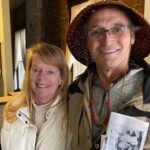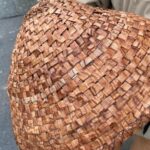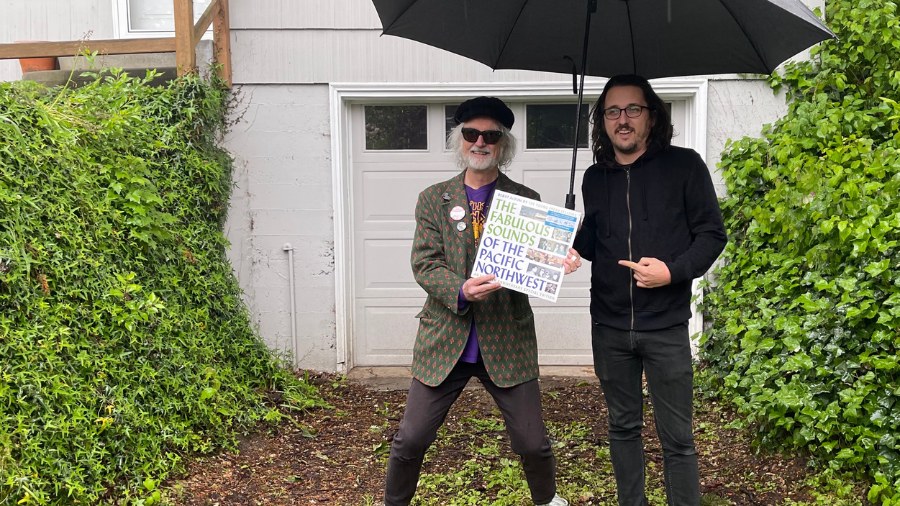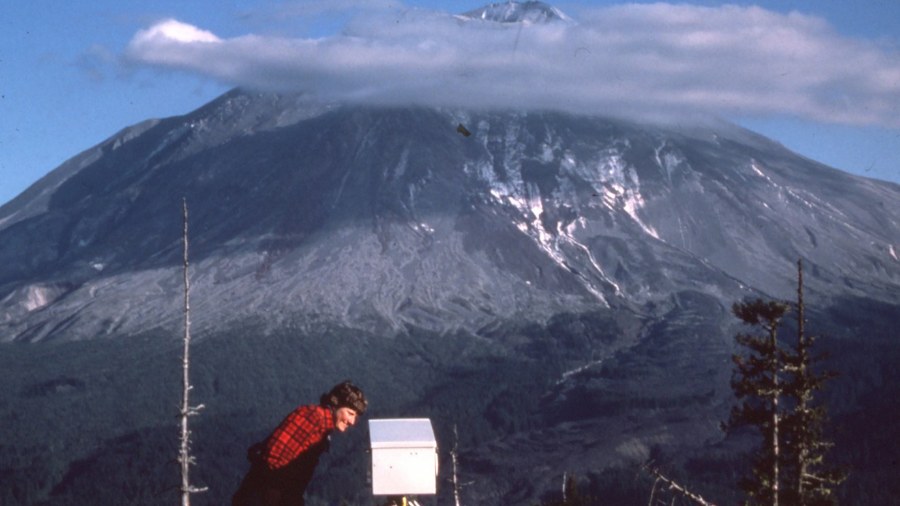The origins of the only photo ever taken of Chief Seattle
Jan 25, 2024, 5:00 AM | Updated: 9:01 am
The Duwamish leader and reluctant city namesake Chief Seattle passed away in 1866, but his image remains a constant presence more than 150 years later thanks to a single photograph he sat for not long before he died.
A flurry of Facebook posts on what appear to be bogus Indigenous history pages have recently shared images misidentified as Chief Seattle. These posts inspired a deep dive into the backstory of that single photograph, and an effort to learn more about what it means to one of the chief’s descendants..
Nearly anyone who has spent time in the Pacific Northwest has come into contact with the one and only photograph of Chief Seattle. The image was created in 1865 by photographer Edward A. Sammis at his studio in Seattle. That studio was upstairs from a drugstore on Yesler Way, just east of what’s now First Avenue. That much, at least, is agreed upon by most Northwest historians.
How the photo came to be is sometimes a little more murky.
The first published account was in a book published in Seattle in 1895 by author Joseph Costello. The book title uses a derogatory term for Indigenous people: “The Siwash: Their Life, Legends and Tales.” It’s hard to pinpoint why, exactly, but the narrative within its pages reads as if it has been embellished or otherwise augmented in order to make a better story. Costello writes that the photo came about only after a protracted negotiation and failed attempts to trade, with Chief Seattle refusing again and again and finally having to be essentially tricked into having his picture taken by Sammis.
All Over The Map: Few clues in mysterious disappearance of TV’s ‘Wheeler & Murdoch’
Carolyn Marr is a historian, author and former Museum of History & Industry (MOHAI) librarian and photo curator. She conducted extensive research about the Chief Seattle photo back in the 1980s and wrote about it for an issue of the history journal Pacific Northwest Quarterly in 1989. Part of Marr’s research involved examining an original edition of Costello’s book held by UW Special Collections.
It turns out that that a Seattle author and historian of the 19th and 20th century also likely had that same copy of Costello’s book in his possession at some point in the past.
We know this, because Marr made a pretty amazing and enlightening discovery.
“Clarence Bagley left a note inside of that copy of ‘The Siwash’ in which he discounts that whole story,” Marr told KIRO Newsradio.
Bagley died in his late seventies back in 1932, so the note from Bagley is now close to at least 100 years old.
“He says that (Chief) Seattle agreed to be photographed when Sammis invited him,” Marr continued. “So, it is controversial. We don’t know in which context the photograph was taken, but we do know that there was only ever one photograph taken of him.”
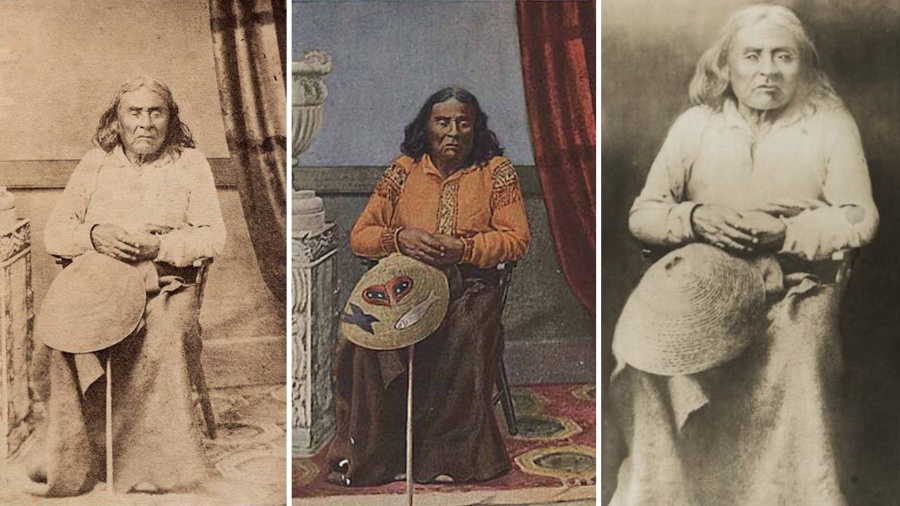
Images of Chief Seattle, include, from left to right, Edward Sammis’ original circa 1865 photo, a colorized variation from sometime later and a version with hand-painted “open” eyes. (Photos at left and center courtesy of the Museum of History & Industry; photo at right courtesy of Wikipedia)
More on the one and only photo
In that one and only photograph, Chief Seattle is seated in Sammis’ studio, in a simple setting with a studio backdrop that was probably used for dozens if not hundreds of portraits of other less well-known people. From his posture and look, Chief Seattle appears to be very old, and it’s believed he was close to 80 when the photo was taken.
“I think that what he’s wearing pretty much looks like what he would wear every day,” Marr said. “And he has a hat, a cedar woven hat. He’s holding it.”
Marr says that Edward Sammis wasn’t necessarily trying to document history by taking the photo of Chief Seattle. Photos of Indigenous people were marketable back east in those years, so Sammis – likely assisted by Clarence Bagley – printed 100 copies that he shipped off to sell in New York.
“He figured that they were going to sell, and it seems like they probably did,” Marr said.
More from Feliks Banel: Seeking clues to the mystery cottage at Kirkland’s newest park
While only one original photo was created by Edward Sammis, Marr says other photographers took that image, created their own new negatives from it, and then manipulated and changed it using techniques that can only be described as crude or even “pre-Photoshop.”
“Photographers could change things by just painting on top of the negatives and doing all these things,” Marr explained. “Opening the eyes was probably the most the most startling thing” done to the Chief Seattle image, Marr said.
At least a few of these “alternate versions” of the Chief Seattle image exist, where the elderly man’s eyes, which in the original are nearly closed, appear to be wide open.
“Maybe more than one photographer opened (Chief Seattle’s) eyes,” Marr said, including many whose names we’ll likely never learn, but also at least one well-known photographer did it, too. “I know that Asahel Curtis, there’s one signed by him where his eyes are opened,” Marr said.
“I also remember a colored postcard where he’s wearing different clothes and his hat has colored designs painted on it”, Marr explained. “And then there’s one other one that’s really strange. It looks like a photographer took the head from the Sammis’ picture and then put a different body underneath, and it looks like he’s outdoors.”
“So it’s totally fake,” Marr said.
While the origins and authors of most of those fakes remain a mystery, thanks to Paul Dorpat and an installment of his Seattle Times’ feature “Now & Then” from 1992, we do know where the original photograph was taken: on the second floor of a wooden building that once stood on the south side of Yesler Way just east of what’s now First Avenue.
That wooden building is long gone. In its place is a brick building dating to 1889. Merchants Café and Saloon is housed there now, and has been since at least 1890.
Chief Seattle relative Ken Workman speaks out
In was at this location where KIRO Newsradio recently met up with Ken Workman, a member of the Duwamish Tribe.
Workman is in his late 60s and is retired from a long career with Boeing. Many Seattleites might remember seeing Workman at both Macklemore concerts held in late December at Climate Pledge Arena, where he delivered his own unique twist on those “land acknowledgements” that have become commonplace at the start of public events.
“Land acknowledgement,” Workman intoned, accompanied by a single Indigenous drummer standing next to him on the massive stage. “How am I supposed to acknowledge my own land?”
After introducing himself in Lushootsheed, he repeated a translation, “I am Workman, of the Duwamish Tribe.”
The sellout hometown crowd went wild.
Outside Merchant’s in the January rain, Workman was wearing a woven cedar hat. It was the same one he had at Climate Pledge Arena in December, and it’s just like the one his great-great-great-great grandfather Chief Seattle is holding in the old photo.
“This is a working hat,” Workman explained. “See how you can see through it? In the summertime, the wind blows through there. So when I’m sweating profusely, like in a canoe journey, it’s like a refrigerator.”
Reporting live from Seattle’s past: Epic folk song commemorates Northwest shipwreck and a sheep
“And in the wintertime like this, the woods swells up, and it becomes waterproof,” Workman continued. “And if you think of this as a living thing, because it’s a tree, then the DNA of the people are in the tree. So in a sense, I’m carrying around all of my ancestors. And what are they doing? Keeping my head dry.”
Even without the hat, Ken Workman bears a striking resemblance to his famous ancestor.
Duwamish DNA in Seattle
But what’s even more important to him than the photo is the “DNA” that he was talking about.
Workman says the DNA of the Duwamish is everywhere in what’s now downtown Seattle. He says the timber used in those Pioneer Square buildings from the 1890s was harvested from trees that were probably 200 hundred years old when they were cut down, meaning they date back to the time before any Europeans arrived in the late 18th century.
“So when I’m talking about DNA in the trees, I am talking about in these buildings, and the buildings that are here today, are the ancient DNA of the people,” Workman said. “At a technical level, the DNA of the Duwamish people exists right here in downtown Seattle.”
“They’re still around,” he said.
Ken Workman has known of his Indigenous ancestry for most of his life, but he only learned of his direct descent from Chief Seattle roughly 15 years ago. It happened when he began researching his family history and got help from a co-worker who happened to be an expert genealogist, and who occupied a nearby cubicle.
Workmans friend, he says “is a devout Mormon, he does not swear, he does not drink, he does not take aspirin.” At work one day, this friend “made a sound that was unusual – I don’t remember what the sound was, but it was definitely not the kind you make in a cubicle.”
“He says, ‘Ken, you better look at this,'” Workman continued. “And so he was the one that discovered my family’s relationship to Chief Seattle.”
“I was kind of shocked,” Workman said.
After that, the Chief Seattle photo took on new personal significance.
“The picture means a lot to me, in that I’ve seen it for quite a while,” Workman said. “And I never really paid attention to it with the exception of 15 years ago, the same timeframe when I started doing this research, and realized I was related to Chief Seattle.”
Workman has studied the photo intently over the past several years, using software to carefully examine it and to make comparisons alongside images of his own face.
“I matched my eyes, the width of my eyes,” Workman said, explaining how the photo software allowed blending of images. “And I said, ‘OK, as I slide the lever off to one side and the other, my face becomes prevalent, and his doesn’t, I wonder where the cheeks are? I wonder where the chin? And the forehead?”
“And so really, what I’ve got is, I have this photograph with eyes – my eyes and they open, they aren’t painted,” Workman said, referencing the modified images Marr had described.
“It’s a DNA connection.”
Northwest history: Mystery stretches from Cedar River ghost town to ‘Boys in the Boat’
As Workman was speaking, two women came out of Merchant’s Café to find out what was going on. One was Darcy Hanson, who operates the restaurant and manages the old apartments upstairs which are now available as short-term rentals.
Hanson knows all about the photo of Chief Seattle and its connection to the spot where Merchant’s now stands. She invited Ken Workman upstairs to see the second floor to try and maybe get a sense of what Edward Sammis’ photo studio might have felt like, one floor up above the street (in that earlier, now long-gone building).
As Ken Workman looked around, Darcy Hanson pointed out some of the old and likely original 1889 fixtures still in place on the second floor of the building.
“I’m looking at this building and I’m going, ‘Oh yeah, tall ceilings, so these had to be oil lamps or lanterns,’ so you know the building’s old enough for those,” Workman said.
“A lot of stuff in here is original,” Hanson said, pointing to dull brass hardware attached to the side of the door frame and which still opens and closes the transom window above the door. “It’s original, a lot of this in all these apartments.”
“A lot of ghosts,” Workman said, laughing heartily.
Duwamish beliefs detail the sacrifice Chief Seattle made
The notion of “ghosts” – or even less fanciful notions of studying history or of simply understanding the past – is where the story of that image of Chief Seattle takes its most interesting or even paradoxical turn, where Indigenous culture and tradition collides with culture and traditions brought here from elsewhere.
Ken Workman says Duwamish beliefs were that after you die, your soul goes into an underworld where it remains until your living descendants have completely forgotten about you. Only at that point, generations later, can you be reborn.
Thus, naming a city to honor Chief Seattle, taking even just one photograph – not to mention building statues, creating a city seal, talking about him on a radio show which includes his name in its title – is all very European, very ‘Western School of Thought’ in its inspiration and intent.
And especially in its impact.
“But in this culture, it’s the opposite,” Ken Workman said about Chief Seattle and the Duwamish people. “You’re trying to forget that person as fast as you can to reenable them to come back in a descendent.”
“So, by Seattle saying that, ‘Yes, you can do all this,’ his name would have perpetuated forever and ever and he would never had the chance to come back,” Workman continued.
“That is the sacrifice that he made,” Workman said.
Editors’ note: For additional information about Chief Seattle, David M. Buerge’s 2017 book, “Chief Seattle and the Town That Took His Name” is one of the most ambitious and informative Pacific Northwest history titles published in recent memory. In addition, the Duwamish Tribe’s website has more information, including the latest on efforts to regain federal recognition.
You can hear Feliks Banel every Wednesday and Friday morning on Seattle’s Morning News with Dave Ross and Colleen O’Brien. Read more from Feliks here and subscribe to The Resident Historian Podcast here. If you have a story idea or a question about Northwest history, please email Feliks.

